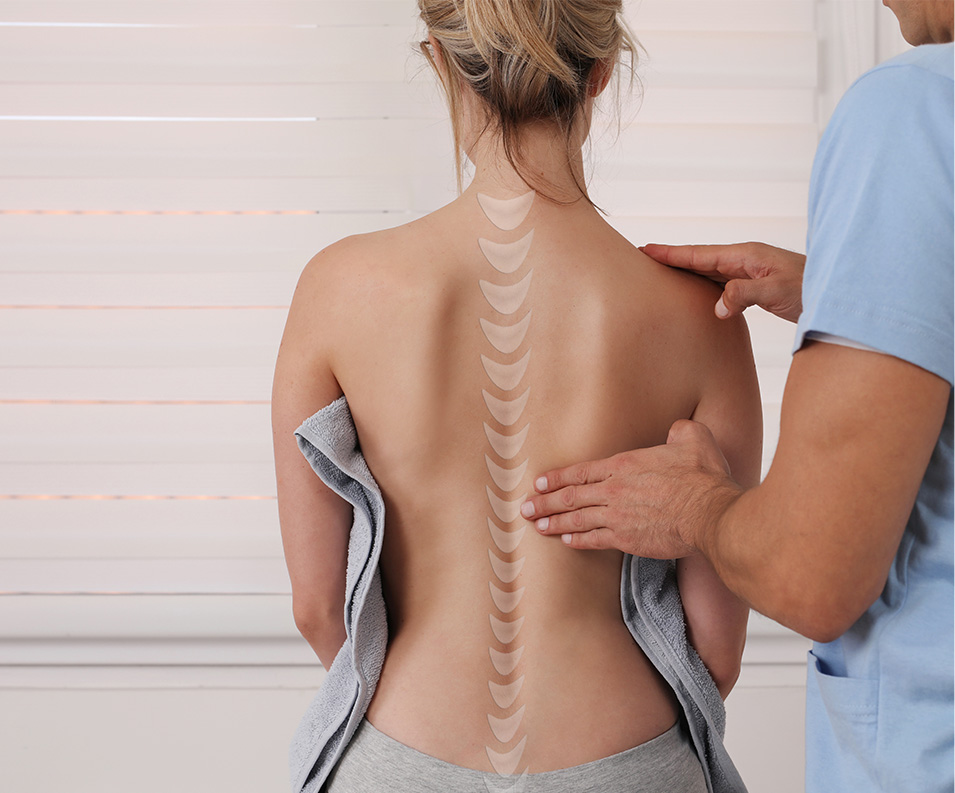Spinal Decompression

About Spinal Decompression Therapy
and the Triton Decompression Traction System (DTS)
Physical Therapy First is pleased to offer the Triton Decompression Traction System (DTS), which is used for spinal decompression therapy, an advanced form of spinal traction. Spinal decompression therapy can be a successful, non-surgical alternative treatment for relieving low back, neck pain, and radiating arm and leg pain. Spinal decompression therapy is an effective treatment for:
- Herniated or Bulging Discs
- Sciatica
- Degenerative Disc Disease
- Post-surgical Patients
- Facet Syndrome
- Spinal Stenosis
What Is Spinal Decompression Therapy?
Research to develop this procedure was conducted by prominent physicians, engineers and technicians at major teaching hospitals. Our Triton Decompression Traction System is FDA approved and has been clinically proven to provide pain relief and decrease symptoms associated with herniated and/or bulging discs.
Studies have shown that the spinal disc injury is responsible for a significant number of lumbar/leg pain and neck/arm pain syndromes. Excessive compression forces from daily activities increases internal spinal disc pressure which can lead to spinal disc protrusion, herniation, and bulging of disc material.
Using the Triton DTS in conjunction with other physical therapy treatments provided in our clinic can effectively relieve the pain and disability resulting from disc injury and degeneration. The treatment aids in the healing of damaged discs and reverses dystrophic changes in nerves. The Triton DTS treats the functional and mechanical aspects of spinal disc pain through non-surgical traction (decompression) of spinal discs.
Our new, computer-controlled Triton DTS is designed to apply distraction and decompression to the patient’s spine without producing reflex paravertebral muscle contractions.
By significantly reducing internal disc pressure, the Triton DTS promotes retraction of the herniation spinal disc material back to a normal physiologic position and promotes the intake of fluids, oxygen, and other substances necessary for healing the spinal disc and surrounding tissues. This decompression stimulates the repair of tissues and inhibits leakage of the internal material of the spinal disc (also known as the nucleus pulposus).
Recent research has shown that 86% of the 219 patients who completed decompression therapy reported immediate resolution of symptoms, while 84% remained pain-free 90 days post-treatment. Physical examination findings showed improvement in 92% of the 219 patients, and remained intact in 89% of these patients 90 days after treatment (Gionis, Thomas MD; Groteke, Eric DC. Surgical Alternatives: Spinal Decompression. Orthopedic Technology Review. 2003; 6 (5).
How Is Spinal Decompression Therapy Using the Triton DTS Different From the Older Form of Traction?
Spinal traction has been around for over 1000 years and it has been seen in a variety of forms. Old forms of spinal traction can be uncomfortable and do not always produce pain relief. Clinical studies have shown ordinary traction with a steady pull can be an ineffective treatment for back and neck pain relief. The lack of success with older forms of traction may be due to our bodies’ reaction to the steady pull of the traction machine. Under a steady traction pull our spinal muscles may involuntarily contract which makes unloading the injured spinal disc unsuccessful. So, rather than achieving the desired effect of unloading the spinal disc, the contracting spinal muscles may actually increase the intradiscal pressure. This old form of traction does not allow the spinal discs to heal or the spinal nerves to become decompressed.
Spinal decompression therapy using the Triton DTS is a modern, computerized, updated form of traction. The Triton Decompression Traction System uses computer technology to control variations in the unloading (traction pull) of the spine, effectively avoiding the body’s muscle contraction response. Your physical therapist can control how many progressive tension steps you experience before reaching the maximum tension. Also, the physical therapist has complete control over how long the tensions are held steady and how often they are repeated through
What Are The Treatments Like?
While lying down on the table, the Triton DTS’s computer simulates an anti-gravity effect on your spine that helps herniated spinal disc material to move toward its normal position, thus, reducing spinal disc pressure and pain. Patients typically describe the treatment as a gentle, painless, intermittent pulling sensation.
How Long Are Treatments And How Many Do You Need?
Can Spinal Decompression Therapy Using Triton DTS Help My Pain?
Will Spinal Decompression/Traction Therapy Hurt?
Is Spinal Decompression A New Type of Treatment?
Is Spinal Decompression A New Type of Treatment?
How Long Will My Treatment Program Be?
The physical therapy phase may include additional spinal decompression treatments using the Triton DTS coupled with therapeutic exercise, stretching, and spinal manipulation to enhance the response to treatment. Most patients discontinue spinal decompression / traction treatments after 4 to 6 weeks.
Why Is This Type Of Therapy More Successful Than Other Treatment Options?
Additionally, spinal discs have been shown to be a predominant site of pain, so directing treatment the spinal disc can be an effective treatment approach. The blending of focused traction at the injury site, rehabilitation to the supporting structures, and overall strengthening / conditioning of musculature makes the treatment unique.
Why the Need For Therapeutic Exercises And Other Therapies?
A gradual weakening of the spinal muscles and secondary supporting muscles of the spine and the consequential decrease in spinal stability can put undue stresses on the spinal discs and leads to premature spinal disc degeneration, pain, and loss of function. Our program of spinal exercise and adjunctive therapies will assist in rehabilitating these structures.
Will My Pain Go Away For Good?
How Much Will Physical Therapy and Spinal Decompression Cost?
Call Us Today!
Roland Park
200 W Cold Spring Ln #300
Baltimore, MD 21210
(410) 662-7977
Clarksville
5005 Signal Bell Ln #202
Clarksville, MD 21029
(410) 531-2150
Hunt Valley
Onelife Fitness
126 Shawan Rd, Suite 300
Cockeysville, MD 21030
